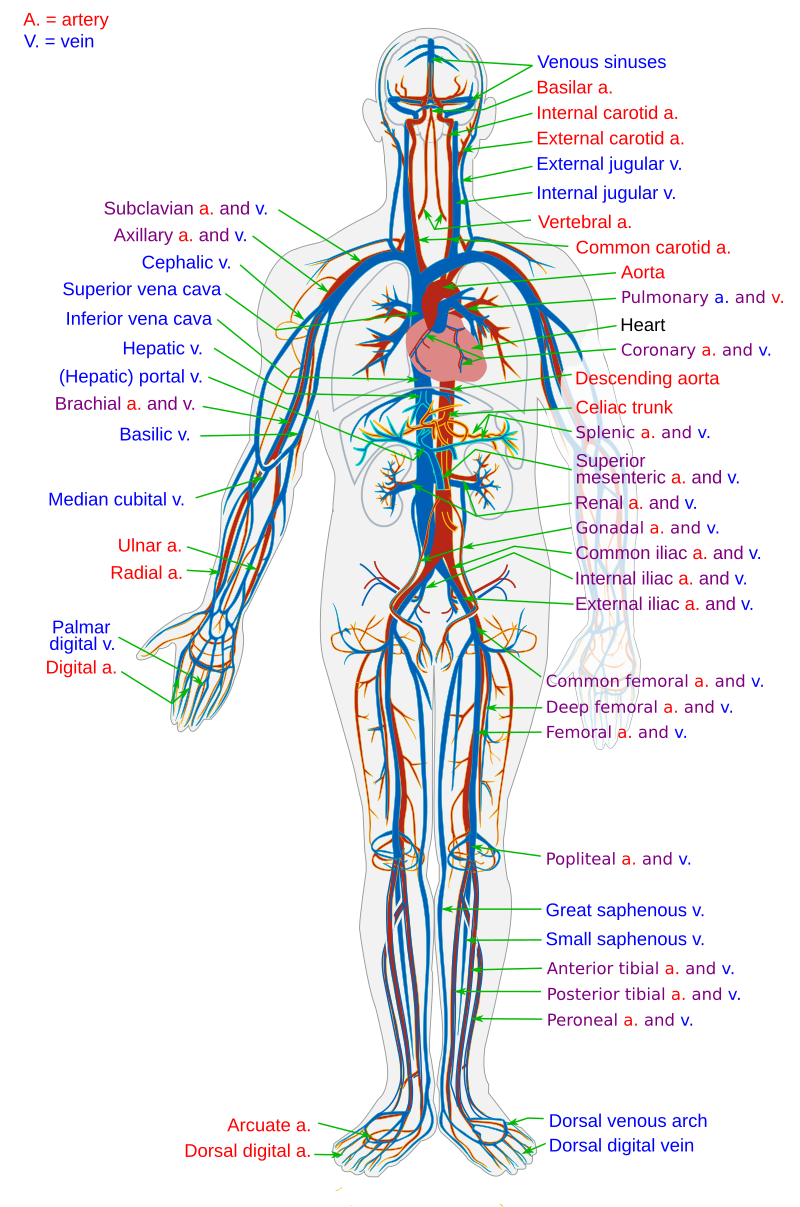The circulatory system, also called the cardiovascular system or the vascular system, is the part of the cardiovascular system that carries oxygenated blood away from the heart to the rest of the body, and returns the deoxygenated blood to the heart again. This is the opposite of what happens in a small or closed circulation.
The blood - coming from the lung - leaves the heart through the aorta. From there, the oxygenated blood spreads to all organs and tissues that absorb oxygen through the arteries, arterioles and capillary vessels. The deoxygenated blood is absorbed by the smaller veins, then the larger veins and then transferred to the upper and lower vena cava, which drains into the right part of the heart and thus completes the cycle. Then the blood is re-oxidized by going to the lungs through the pulmonary artery, which is called the micro-circulation, and then it returns to the major circulation.
That is, the deoxygenated blood leaves the heart, enters the lungs, takes oxygen and returns to the heart, so oxygenated blood leaves the heart and into the body.
That is, the oxygenated blood reaches the left atrium from the lungs through the pulmonary veins, then moves to the left ventricle through the bicuspid valve and is then pumped to the rest of the body through the aorta.
